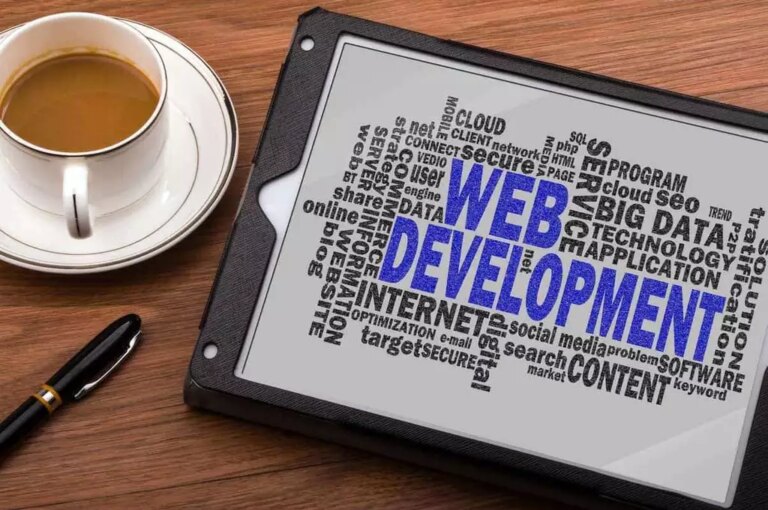This article will provide an in-depth analysis of the history, definition, phases, benefits, and disadvantages, along with solutions that support the system development life cycle. In most use cases, a system is an IT technology such as hardware and software. Project and program managers typically take part in SDLC, along with system and software engineers, development teams and end-users. The software development lifecycle (SDLC) is the cost-effective and time-efficient process that development teams use to design and build high-quality software. The goal of SDLC is to minimize project risks through forward planning so that software meets customer expectations during production and beyond.

The waterfall model provides discipline to project management and gives a tangible output at the end of each phase. However, there is little room for change once a phase is considered complete, as changes can affect the software’s delivery time, cost, and quality. Therefore, systems life cycle model the model is most suitable for small software development projects, where tasks are easy to arrange and manage and requirements can be pre-defined accurately. SDLC methodologies fit within a flexibility spectrum ranging from agile to iterative to sequential.
Steps in SDLC
Although “systems engineering” is not mentioned, this book highlights many systems engineering issues and illustrates the need for SE as a discipline. The book also illustrates the danger of applying a previously successful concept (the sea level canal used in Suez a decade earlier) in a similar but different situation. It illustrates the danger of lacking a fact-based project cycle and meaningful decision gates throughout the project cycle.

The execution component is responsible for the final deliverable of the project and is built around pure code development, system configuration, or a combination of both. The document sets expectations and defines common goals that aid in project planning. The team estimates costs, creates a schedule, and has a detailed plan to achieve their goals. This is the amazing story of the last Antarctic expedition of Shackleton and the Endurance in 1914 to 1917.
Systems development life cycle
The enabling systems include the manufacturing system to produce the system, support systems such as support equipment to maintain the system, and verification systems to verify the system. These life-cycle considerations should be addressed early to avoid adverse impacts later. For example, if the manufacturing system capability is not considered early, the cost of producing the system may increase substantially due to imposing higher cost manufacturing methods.
- The System Development Life Cycle encompasses a series of interconnected stages that ensure a systematic approach to system development.
- The security issues for a development must be identified by a formal risk analysis.
- All concerned parties must be notified of changes to ensure that they are all working on the same design.
- These issues include a strong and interoperable PKI; a robust conflict resolution mechanism; transparency and accountability in the deployment of communication, hardware, and software primitives; etc.
- Information assurance and, more fully, system assurance efforts, such as component verification and system validation provide SSE requirements traceability.
- If that is the case, you can obtain much information on what to include in the life cycle requirements section from the handbook.
They analyze the requirements to identify smaller coding tasks they can do daily to achieve the final result. This model is suited for small teams who work to produce a set of features within fixed-time interactions, such as two- to four weeks, called sprints. Let’s walk through the four key elements of a Scrum model as depicted in Fig 10.4. It is difficult to incorporate changes or customers’ feedback since the project has to go back to one or more previous phases, leading teams to become risk-averse. Once a system has been stabilized through testing, SDLC ensures that proper training is prepared and performed before transitioning the system to support staff and end users.
Significance of System Design
The process describes the steps to accomplish each stage of the life cycle including input to and output from this stage. Today’s complex and increasingly highly connected systems face rapid obsolescence under the stress of technological change, environmental change, and rapidly evolving mission needs. For these systems to remain robust against disruption they must be architected to agilely adapt. To meet these needs, the system must be assessed to apply the process that best serves the system, subsystem or component of the system of interest (SOI). The systems development life cycle (SDLC) was the primary conceptual basis for planning in this era.

Readers will also explore common SDLC scenarios and decisions that clinical informaticists face in practice. In the information systems domain, the terms SDLC and system life cycle are often used interchangeably. It has been suggested that information SDLC should not be confused with system (the delivered product) life cycle. The system life cycle begins when the SDLC delivers the final product, that is, when the implementation phase begins. The objective of this activity is to extend as long as possible the life cycle of an existing system. When this is not longer feasible or efficient, the system life cycle terminates and a new SDLC commences.
Utilization Stage
The Development stage involves the actual coding and programming of the system. Based on the design specifications, developers write code, create database structures, and implement necessary functionalities. Rigorous testing and quality assurance are performed to ensure the system’s accuracy, performance, and adherence to the design requirements. For conventional weapon systems, the difficulty of information assurance and software testing has come to a head with one of the most complex systems ever developed—the Joint Strike Fighter.
While the supplied product or service may be seen as the narrow system-of-interest (NSOI) for an acquireracquirer, the acquirer also must incorporate the supporting systems into a wider system-of-interest (WSOI). These supporting systems should be seen as system assets that, when needed, are activated in response to a situation that has emerged in respect to the operation of the NSOI. The collective name for the set of supporting systems is the integrated logistics support (ILS) system. Program managementProgram management employs phases, milestonesmilestones, and decision gatesdecision gates which are used to assess the evolution of a system through its various stages.
Operations and maintenance
Adding 1 to in a 15-bit register does not produce 32768, but 0 instead, as experienced in serious situations, such as with the use of the Patriot Missile. Other steps which may appear include project initiation, functional specifications, detailed specifications, evaluation, end-of-life and other steps that can be created by splitting previous steps apart further. This step involves decomposing the system into pieces, analyzing project goals, breaking down what needs to be created, and engaging users to define requirements. This popular file transfer service was designed to send files between users which are too big to be sent as email attachments.

They continuously evaluate requirements, plans, and results so that they can respond quickly to change. The agile model is both iterative and incremental, making it more efficient than other process models. The iterative process suggests that teams begin software development with a small subset of requirements. Then, they iteratively enhance versions over time until the complete software is ready for production. The planning phase typically includes tasks like cost-benefit analysis, scheduling, resource estimation, and allocation.
Analysis
Additional information on each of these stages can be found in the sections below (see links to additional Part 3 articles above for further detail). It is important to note that these life cycle stages, and the activities in each stage, are supported by a set of systems engineering management processes. The waterfall approach is best suited for a simplistic, yet systematic approach to meet the exact requirements of the client. The immediate benefit to the client is the constant realization of the benefits in terms of the expectations of the final deliverable. This approach also ensures that the provider can constantly measure itself to interpret the requirements of – and deliver the best solution to – the client.
